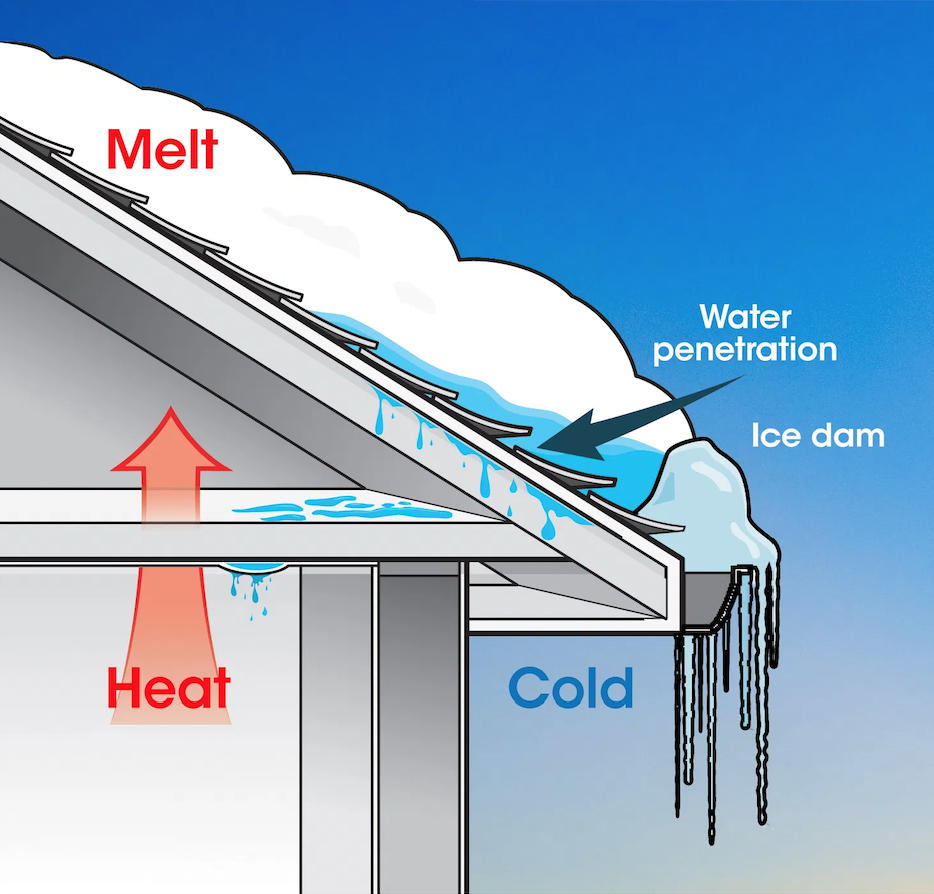While ice cycles may look beautiful hanging off the front of your house during the winter months, they may not be worth the unexpected cost that comes with them. Check out this article on how to prevent ice dams.
Ice Dams
The proper term for what happens when ice cycles form is actually Ice Dam. Ice dams are exactly what the sound like. Water freezes in and over the gutters of your house. This causes the water running down your roof to stop and freeze over the roof covering material. As rain flows, or snow melts, the water moves slowly down the roof and freezes into what we call ice cycles.
This slow moving and freezing water causes two major issues. The first is that ice can be heavy! Gutters fill up with water and ice, and are forced to support more weight than they are capable of supporting. This can cause the gutters to rip away from the house. Not only does this present an issue as snow melts, but it will also present an issue in the spring during heavy rains.
The second major issue that ice dams present is water being trapped on your roof for extended periods of time. This is especially dangerous for asphalt shingle roofs. Asphalt shingles are not water proof, only water resistant. They are designed to shed water from the roof. When ice dams form, ice and water are trapped on the shingles for much longer, allowing the water to penetrate the asphalt shingles and potentially leak into the attic.
Small Leaks Lead To Major Damage
Even a small penetration of water can lead to exponentially more damage than what you might expect. A small lead into your attic can eventually cause significant drywall damage to your ceilings, or even result in mold growth within the attic. This can affect the overall health of your entire family. Mold remediation can also be extremely expensive.
How to Prevent Ice Dams
Lucky, preventing ice dams is relatively easy. One of the primary ways to prevent this is by ensuring your gutters are sloped properly. Properly sloped gutters will remove water quickly, not allowing the gutter to fill up and freeze. Gutters should be sloped at 1/4 inch per 5 feet.
How to Monitor for Leaks
If you do see an ice dam on your house this winter, be sure to keep an eye on it to ensure your roof does not begin to leak. Check your attic space several times a month, closely monitoring the areas where ice dams are occurring. If you’re not sure where to check, contact Vandalia Home Inspections today for an attic inspection! You can book online at http://304inspect.com/price/.


Recent Comments